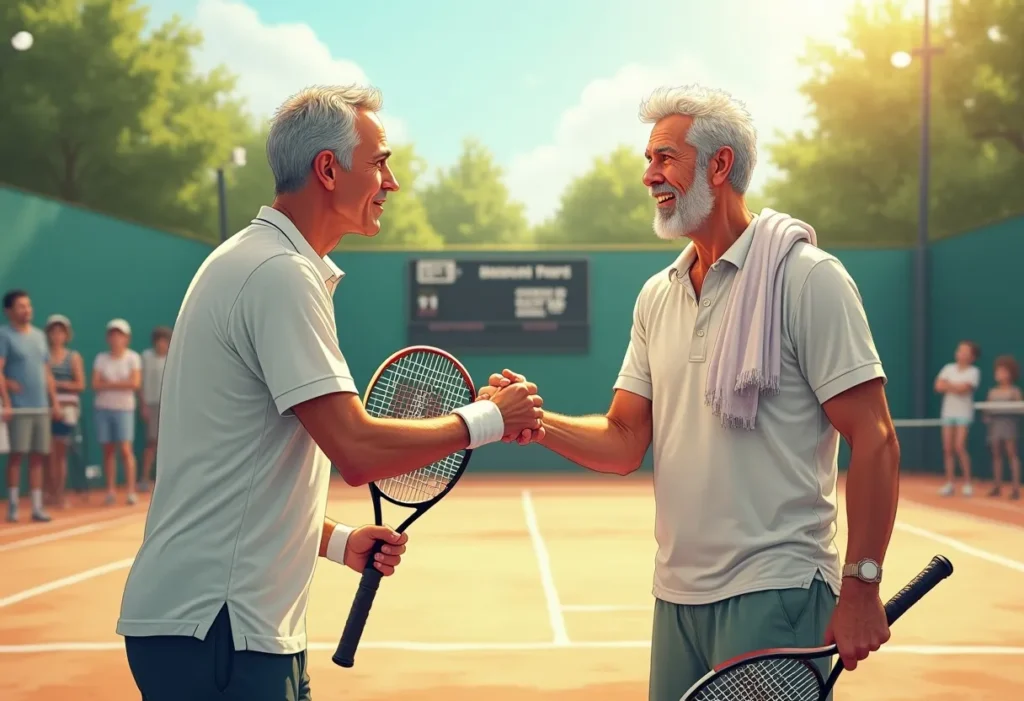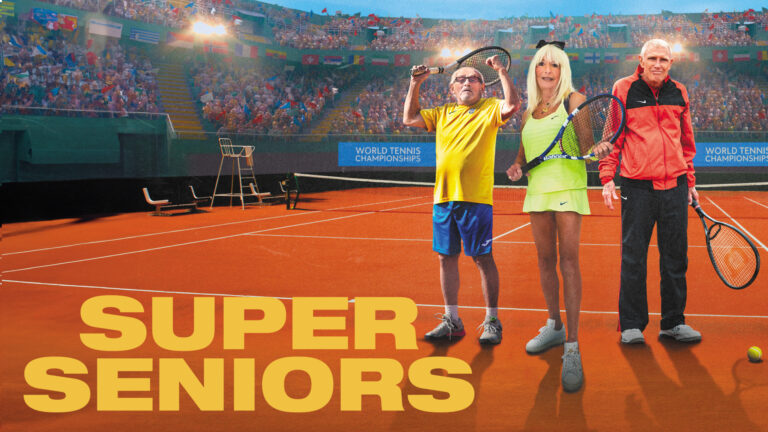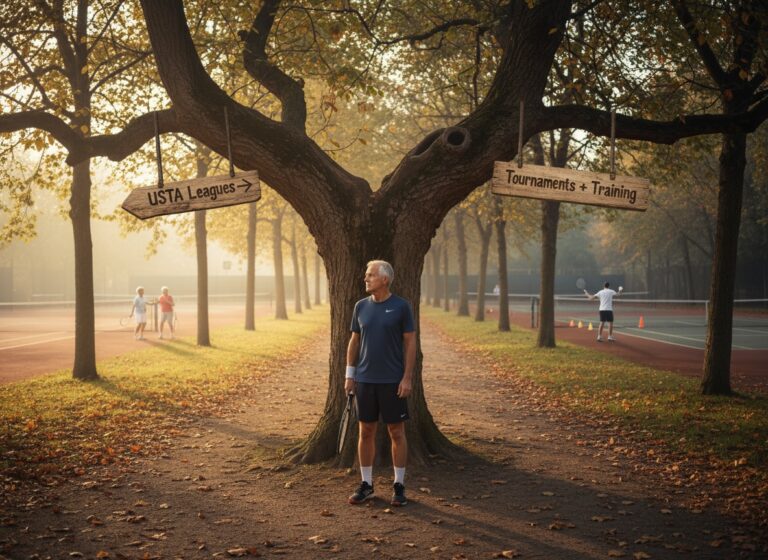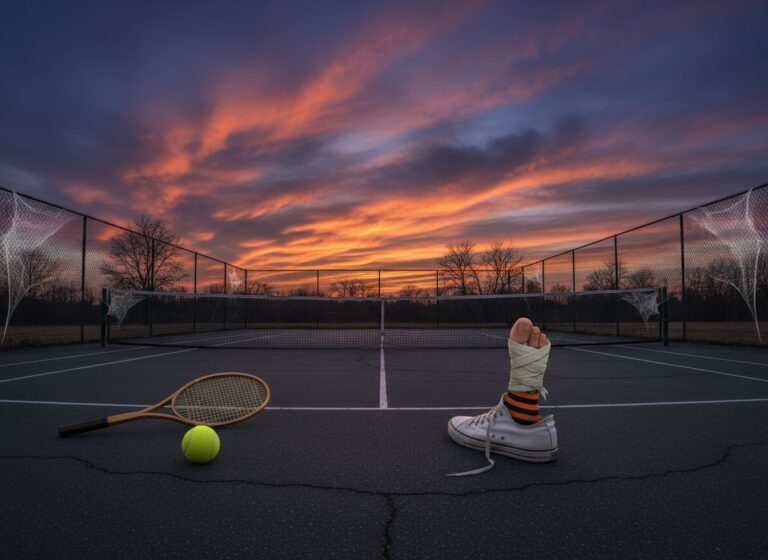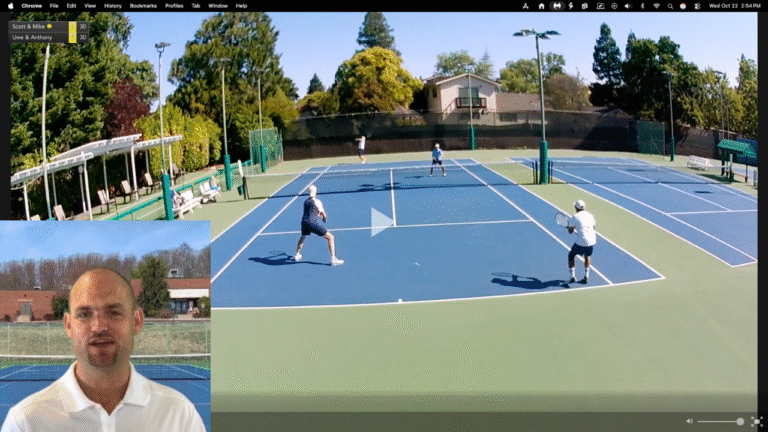Let me tell you about the day I got a crash course in senior singles strategy… from my opponent.
It was a M65 singles tournament, first round, and I drew the #2 seed. You know that feeling when you look at the draw and hoping, “Maybe this guy’s just ranked high because he plays a lot” Yeah, no. This guy could play.
We battled for two sets—or at least I did, I gave him all I had. I tried to push him side to side, hit heavy forehands. I chased everything he hit. I felt pretty good about how I competed, or at least hit my forehand, even though I only won 2 games. Then the handshake.
That’s when he hit me with the question:
“Do you play a lot of younger players?”
“Yeah,” I said. “Actually, I do in the NTRP 18+ Tournaments. I like the challenge.”
He nodded and smiled—politely, but with the kind of smile that says: “Well, that explains it.”
Then he dropped the hammer:
“You play like you’re in an 18+ tournament. All side to side. No drop shots. No up-and-back pressure. I just waited for you to wear yourself out.”
Well, that stung like a mishit overhead. But also… he wasn’t wrong.
I’d spent so long focused on rallying deep, using pace and spin, making my opponents move left and right. I never learned how to bring them forward. Never learned how to change the rhythm. And I certainly didn’t have anything in my game called “touch.”
That day, I realized I wasn’t just missing a shot—I was missing a dimension. The drop shot. The senior secret weapon.
Why the Drop Shot Isn’t Just a “Cute” Shot
Younger me (a.k.a. 61-year-old me) thought drop shots were for guys who didn’t want to hit real winners. Turns out, in senior tennis, that’s most of us.
The drop shot changes the geometry of the court. It turns your 60-year-old legs into a 30-year-old’s brain. I can use my forehand the way it was meant to be used, hit a nice deep ball with pace, expose the net and force the opponent to sprint forward giving you the upper hand on the next shot—even if your opponent has young legs or more hair. And, if they did make it, nothing like a lob to make them run back to the baseline, getting those knee braces to pay for themselves. That or hearing them groan as it sails over their head.
And let’s be honest: wouldn’t you rather hit a crafty drop shot than run down another crosscourt forehand for the fifth time in a row? Yeah. Me too.
My Early Attempts Looked More Like Donations
When I first tried adding the drop shot, I gave away more points than a malfunctioning ball machine. Here’s what I did wrong (in case you want to replicate my failure):
- Told the whole world I was hitting a drop shot with a giant wind-up
- Flicked my wrist like I was swatting a fly
- Used a death grip better suited for hammering nails than brushing tennis balls
- Hit it way too hard… or way too soft… but never just right
- Tried it from 10 feet behind the baseline because, hey, why not?
Spoiler: except for the balls finding the middle of the net, they all came back. Sometimes with interest.
The Fix: Practice Like It’s a Real Shot (Because It Is)
Eventually, I swallowed my pride and started practicing the drop shot like it mattered. I broke it down, worked on technique, and made peace with looking ridiculous for a while.
Here’s what finally helped:
- Continental grip so I could add slice and keep it soft
- Short, smooth swing, like I was painting a fence, not breaking one
- Contact out front, just under the ball, with a gentle brushing motion
- Tiny follow-through, aiming to land the ball just over the net
I added cones to the service box and tried to land five drop shots in a row near them. That took longer than I’d like to admit. But I kept at it. Eventually, it clicked.
The Payoff: Sweet, Sneaky Victory
Just recently, I had a Flex match with a guy about 30 years younger than me. Fit, fast, and full of energy. You know, the kind of guy who’s never heard of Advil.
This one wasn’t close—I won 6-1, 6-0, and from the very first point, I had him on the run. Side to side, up and back, drop shot here, lob there… it felt like one of those perfect-match fantasies you cook up in your head while stretching your hamstrings. And the best part? I wasn’t just reacting, I was orchestrating. That lesson from the #2 seed kept echoing in my mind: “Senior tennis is an up and back game.” Turns out, he was right. This time, I was the one pulling the strings. And I’ve got to say—it’s a lot more fun being the guy waiting for the drop shot… than the one who never saw it coming.
The Big Takeaways
- The drop shot isn’t just a shot—it’s a strategy.
- Senior tennis is not just side to side—it’s up and back.
- If you never practice the shot, you’ll never trust it.
- Don’t be afraid to miss. Be afraid of playing the same game forever.
I wouldn’t call myself a drop shot specialist, but I’ve learned that senior tennis isn’t won with pace alone—it’s won by changing the direction of the game.
And these days, I actually play like it.
Ever had a drop shot that looked more like a slow-motion gift to your opponent? Yeah… me too. Got a funny or hard-earned drop shot story of your own? I’d love to hear it—leave a comment or reply and share the pain (or glory). And if you’re into tales of tennis triumphs, blunders, and the occasional strategic epiphany, hit that subscribe button to join Senior Tennis Unpacked. Let’s laugh, learn, and get sneakier together.


